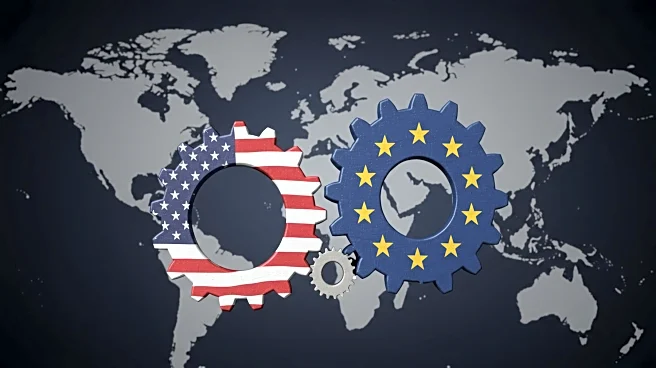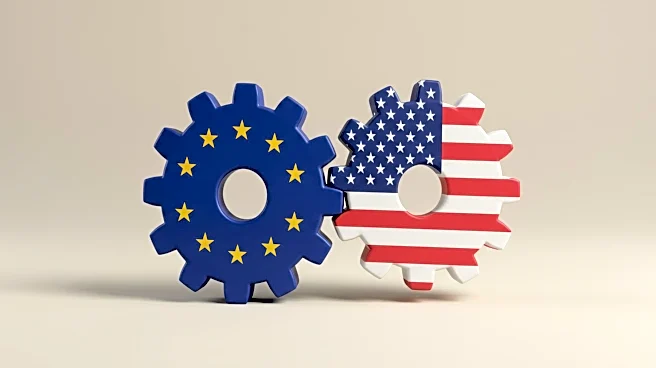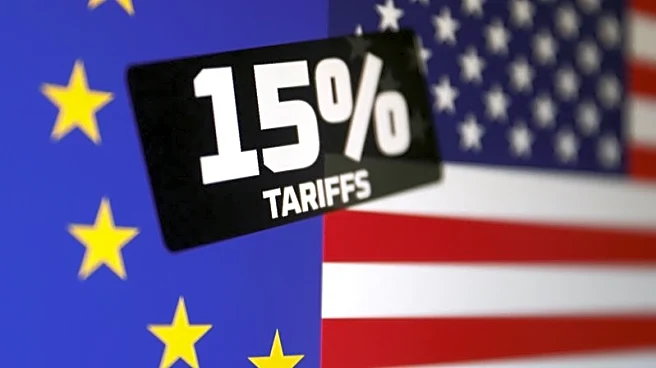What's Happening?
The United States and the European Union have formalized the terms of a framework trade agreement, as announced in a joint statement by the White House. The agreement, initially discussed by President Trump and European Commission President Ursula von der Leyen, includes a 15% tariff on EU imports by the U.S. The U.S. will apply either a 15% tariff or a most favored nation duty rate on EU imports, with the higher rate enforced. Specific sectors such as pharmaceuticals, semiconductors, and lumber will have a tariff cap of 15%, while other sectors like aircraft parts will follow the World Trade Organization's most favored nation rate. The EU plans to eliminate tariffs on U.S. industrial products and provide preferential market access to various U.S. food exports. Additionally, the EU will procure $750 billion in energy products and $40 billion in artificial intelligence chips from the U.S., with EU companies investing $600 billion in the U.S. over the next three years.
Why It's Important?
This trade agreement marks a significant step in strengthening transatlantic economic relations. By reducing tariffs and providing preferential market access, the agreement aims to enhance trade flows between the U.S. and EU, benefiting industries such as pharmaceuticals, semiconductors, and agriculture. The procurement of energy products and AI chips by the EU signifies a substantial investment in U.S. technology and energy sectors, potentially boosting innovation and economic growth. The agreement also aims to reduce regulatory burdens on U.S. companies, fostering a more predictable and stable trading environment. This could lead to increased competitiveness and job creation in both regions, while also securing long-term economic growth.
What's Next?
The agreement is set to take effect with the introduction of EU legislation to enact the measures. The U.S. plans to apply a 15% tariff on EU cars and auto parts unless a higher most favored nation duty rate is applicable. Both parties intend to cooperate on automobile standards and consider further sectors for tariff adjustments. The collaboration on steel and aluminum imports to protect against overcapacity is also under consideration. As the agreement progresses, stakeholders from various industries will likely monitor its implementation and impact on trade dynamics.
Beyond the Headlines
The trade agreement could have deeper implications for global trade policies, potentially influencing other international trade negotiations. The focus on reducing regulatory burdens may set a precedent for future trade agreements, emphasizing the importance of streamlined regulations in facilitating cross-border commerce. Additionally, the substantial investments in energy and technology sectors highlight the growing importance of these industries in shaping economic strategies and international relations.












